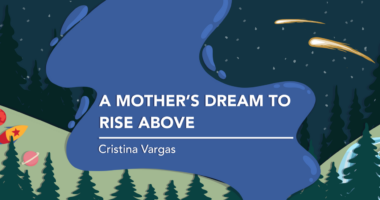Advancing Clinical Care Recommendations for CLN1 Disease

A marathon is difficult even for world-class marathoners. The best of the best have rough days, days when they turn in a subpar performance, or even days when they can’t finish a race or a long training run. They suffer injuries. And usually they need every bit of the aid available at race aid stations.
Managing a chronic condition like CLN1 disease, a form of Batten disease, is how a marathon would look in a nightmare world. It’s a long haul, and it demands everything of families physically, mentally, and emotionally. Batten disease wears you down, and it doesn’t even promise a reward at the end.
My family and I lived that marathon with my younger sister, Taylor, who died of CLN1 disease last fall. We fought it not for 26.2 miles, but 12.5 years, post-diagnosis. That’s why we wanted to do something to help ensure other families would have a better experience, whether or not they have access to treatments. Having already funded promising research and made a difference in federal and state advocacy efforts, we felt this was the missing piece of the puzzle.
The goal
The goal is to give care teams the tools they need to tackle all the problems that come with the disease. Though a handful of Centers of Excellence have been established, many families can’t make it to one of these centers. It can be expensive, and it’s difficult to travel with sick family members. We believed we could give local clinicians a road map, and in turn give every affected family access to the best care possible.
From the beginning, we knew we wanted to focus on developing management strategies. We wanted to design a template so that other groups could take on this challenge for their specific condition. While the CLN1 disease care management project represented a huge undertaking for a small, volunteer-run organization like Taylor’s Tale, similar models can be created for less, particularly now that crucial groundwork is in place.
The why
As is often true with a rare disease, when a clinician sees a CLN1 disease patient, it may be the only time that clinician has encountered the condition at their clinic. Clinicians responsible for patients with this condition won’t have all the answers, but they need access to a road map grounded in fair consensus.
As treatments such as gene therapy, enzyme replacement therapy, and others are developed for CLN1 disease, established care strategies can help inform clinical trials.
Patients and families deserve better. Period.
The design and process
Here are some of the key takeaways regarding the initiative’s design and the process:
- Consensus has value. Bring together clinicians representing multiple countries and medical specialties.
- Though modeled in part on a similar project for CLN2 disease, this initiative did two things differently:
- A poster was accepted by and displayed at the recent Child Neurology Society annual meeting. Our hope was that other family advocacy groups would be encouraged to follow in our footsteps for their condition.
- A survey was conducted to incorporate the family perspective, marking the first example of family inclusion in an effort to develop Batten disease management consensus. A high percentage of affected families worldwide participated, submitting 44 surveys. Taylor’s Tale translated the English-language survey into German and distributed it in the United States, United Kingdom, Australia, and Germany, with the help of the Batten Disease Support and Research Association, Batten Disease Family Association, and NCL-Gruppe Deutschland. Families were so engaged that they actively shared the survey outside countries Taylor’s Tale originally targeted. (We also received responses from Estonia and New Zealand.) The survey required a huge commitment. Despite the all-encompassing nature of the disease — managing it is a full-time job — it was clear families felt strongly that they had to participate.
- Advisers participating in the project had access to the survey results as they developed their presentations for an international meeting hosted in Durham, North Carolina, in May. We were pleased to find that they prioritized the survey data and integrated the family-caregiver perspective into their work.
- The findings of the two-day meeting will produce a manuscript, with the first draft expected in November.
Taylor’s Tale intends for the manuscript to be published open-source, meaning that those in position to benefit can easily access it. In other words, they’ll be able to view the abstract and download the full manuscript without delay or expense.
Want to learn more about the process behind developing CLN1 disease care management strategies? Interested in how you can help drive something similar for another form of Batten disease or a different rare disease? In the coming weeks, you can view the Child Neurology Society poster on the Taylor’s Tale website. In the meantime, feel free to contact co-author and Taylor’s Tale President Sharon King, as she’s happy to answer questions and share lessons learned.
***
Note: Batten Disease News is strictly a news and information website about the disease. It does not provide medical advice, diagnosis, or treatment. This content is not intended to be a substitute for professional medical advice, diagnosis, or treatment. Always seek the advice of your physician or other qualified health provider with any questions you may have regarding a medical condition. Never disregard professional medical advice or delay in seeking it because of something you have read on this website. The opinions expressed in this column are not those of Batten Disease News or its parent company, BioNews Services, and are intended to spark discussion about issues pertaining to Batten disease.







Comments